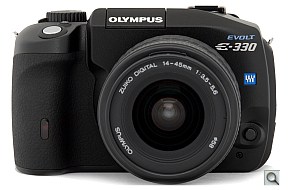Molecular dynamics calculations define optimum strand lengths for the assembly of DNA films as greater than 10 and less than 30 nucleotides.
Molecular dynamics calculations define optimum strand lengths for the assembly of DNA films as greater than 10 and less than 30 nucleotides.
Reconfiguring the topology of DNA nanostructures offers novel architectures for nanodevices.
DNA springs mechanically control an enzymatic reactions by exerting force on specific parts of the enzyme molecule.

Frequent Nanodot readers know that our main interest is longer-term nanotech, but sometimes what’s happening today gets pretty exciting as well. A quick summary of recent advances in nanotech used to fight cancer appears in a Computerworld piece by Sharon Gaudin; some excerpts: Rice University said yesterday that when the nanoparticles deliver dye to the cell,… Continue reading Today's nanotech lets $400 camera see cancer cells
Foresight Feynman Prize winner Nadrian Seeman will share the $1 million Kavli Prize in nanoscience with IBM’s Don Eigler. From the SciAm blog by Katie Moisse: Donald Eigler from IBM’s Almaden Research Center in San Jose, Calif., and Nadrian Seeman from New York University will jointly accept the nanoscience prize for illuminating the basic units of… Continue reading Seeman, Eigler to share $1 million Kavli nano prize

Kevin Bullis reports in Technology Review: Now Paul Rothemund, a computer scientist at Caltech, with a background in biology, has developed a relatively inexpensive way to quickly design and build arbitrary shapes and patterns using DNA — and, he says, it’s simple enough for high-school students to use… It’s really spectacular work. I’m extremely excited about… Continue reading Do-It-Yourself DNA nanotechnology from Caltech
John Faith brings to our attention a writeup by Annalee Newitz over at io9.com which colorfully describes a new achievement by Foresight Feynman prizewinner Nadrian Seeman and team at NYU and Nanjing U.: Today in Nature, a group of researchers announced they’d successfully operated the first assembly line populated entirely by nanobots. The bots in question… Continue reading DNA-based 'robotic' assembly begins

The Mark, “Canada’s daily online forum for news, commentary, and debate,” has published a commentary that primarily takes a negative view of the use of nanotech (or any tech) for life extension: Extreme life extension raises other interesting, yet troubling questions. Significant life extension could have serious implications for individual identity; what if we change… Continue reading Nanotechnology and life extension: challenge & response
Angela Belcher and team at MIT have tweaked a bacterial virus to serve as a scaffolding to: attract and bind with molecules of a catalyst (the team used iridium oxide) and a biological pigment (zinc porphyrins). The viruses became wire-like devices that could very efficiently split the oxygen from water molecules. Belcher says that within… Continue reading MIT's Belcher uses engineered virus to split water
One way to reach molecular machine systems is to get really, really good at protein engineering. If that’s your goal, you’ll want to be in Boston on May 17-21 for PEGS 2010, “the essential protein engineering summit”. Not sure if this is your pathway? Just reading the talk titles is educational. And they have great… Continue reading The protein engineering path to molecular manufacturing